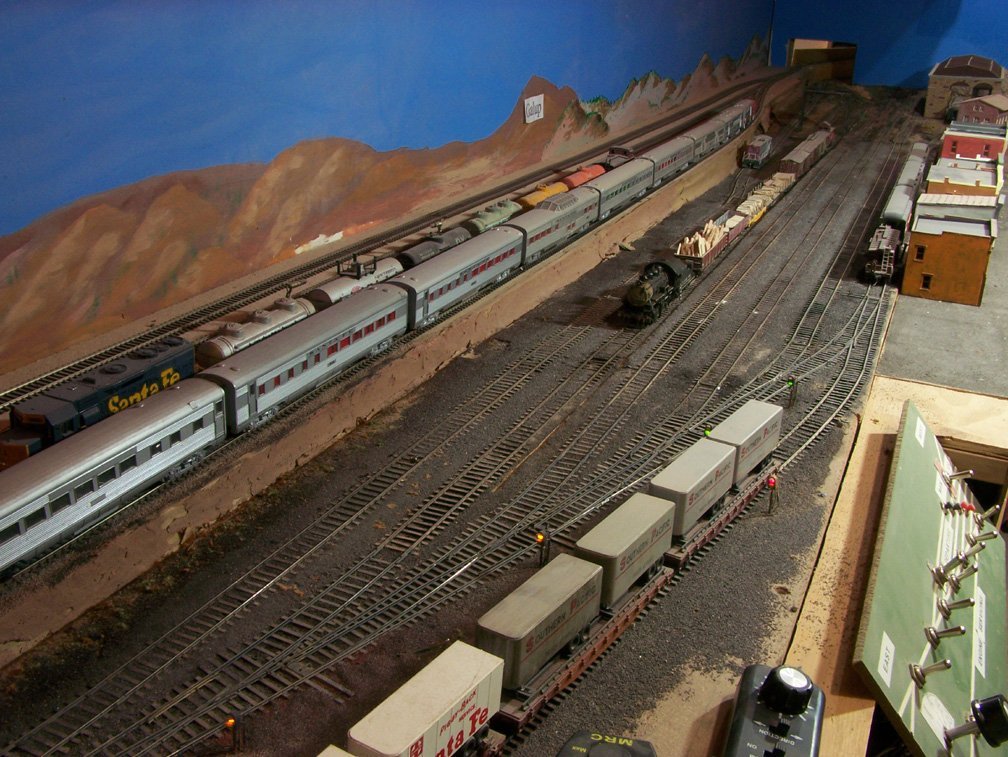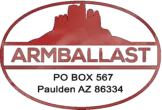Track ballast/Yard Ballast It is another essential part of railroad infrastructure, although it may just look like plain ole gravel. This stone plays a vital role in acting as a support base for the railroad ties and rails. Yard ballast allows for proper drainage of water away from the track. That is why the stone is always sloped downward and away from the railroad.
You may be wondering how such a term came to define the stone which supports the railroad track structure. Interestingly, it has its roots dating back to early times when the stone was used as ballasting for sailing ships. In today’s railroad industry the use of ballast, its application, and purpose has changed little since it was first employed. It will likely always remain an important component as a part of the track structure.
Construction
In new construction or for repair work, the tracks are ballasted to yard/industrial standards. Ballast less depth than mainline, since speeds will below. The spaces between ties are filled in with smaller gravel to tie-top level to provide better footing for yard workers. French drains are often installed, and there may be a manhole or two where the drain lines trunk together.
Years of use
Over time, the ballast gets fouled with spilled lading and blown-in dirt. Weeds begin to grow. During the transition era and earlier, journal box drippings would slowly saturate the ground (poor man’s tarmac.) Cinders from would be spread in the yard. Well-maintained yards will be kept pretty clear of foliage and will occasionally get a ballast transfusion where needed. Unmaintained yards will gradually change to muddy quagmires, sometimes with tracks submerged below the railheads in glop. Tall weeds and bushes abound, and even an occasional sapling if the tracks are embargoed.
Modeling
An interesting effect to model is to model the entire yard somewhat grimy with some weed growth. Anther is to make turnout with fresh, clean ballast.
Most (if not all) prototype yards had something keeping the tracks in place. Cinders were common during the steam and early diesel era. As was “regular” ballast when major yards were built/rebuilt over the years. Over time, dirt, soil, grease, grime, gets everywhere. Also, make some spots looking as if there has never been ballast, to begin with.
Of course, while crushed cinder with basalt is the aggregate of choice for today’s railroads. In years past everything from slag to cinders has been used (always resourceful years ago railroads would use whatever they could find). Some light density railroad lines would appear jet black cinders were used to ballast the route. In any event, track ballast must regularly be cleaned or added as when dirt and grime build-up. When this happens within the rock it reduces its ability to properly drain water.
The ballast also acts as a support base for the railroad track structure giving it strength and rigidity but also allowing for flexibility when trains pass over. Black cinder with basalt is often most used as ballasting.ballasting. It is a hard stone that will lock together providing for extra strength.
The hump yard looked like this for over ten years with just ballast for scenery. This would be correct for the dry Southwest and I left it that way so my customers could see the HO “fine” ballast colours of #1222 yard mix and #1152 Empire Builder overlaid in the foreground. This is the first step no matter how you scenic a yard as the ballast is the base before adding more to it.

The Eastern/Midwest look
A whole host of color and texture brings life to the scene as this railroad doesn’t spray herbicide to kill weeds and grass. I used the following products for this effect; #1031 “N” scale Black Cinder, #1011 “N” scale Red Cinder, #1151 “N” scale Empire Builder ballast, #2000 Urban/Industrial Dirt. This was applied randomly and then brushed around to (slightly) mix the colours. #2 Dead and Alive ground cover, #8 Olive Green Flock, #4 Straw Grass clippings and #1321 “N” scale White Marble for the spilt sand from the engine sanders. The Clump foliage is a sample from a scenery company that never made it a product. All nine products are put down dry and then bonded in one application. It’s hard to tell, but 50 per cent of the original ballast still shows through so you need to PRE ballast the tracks anyway and let that dry completely.

